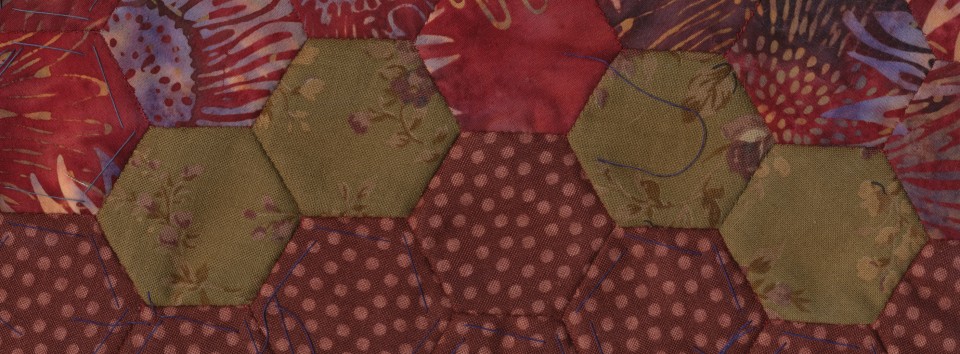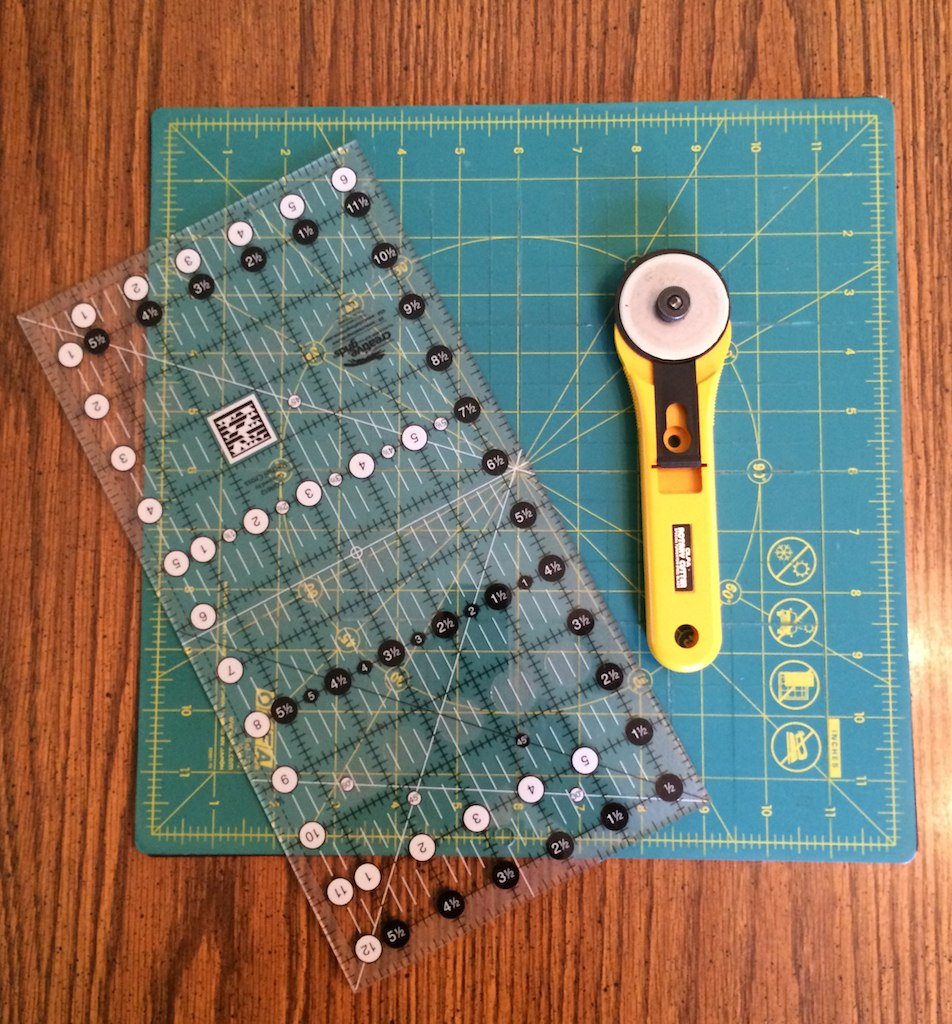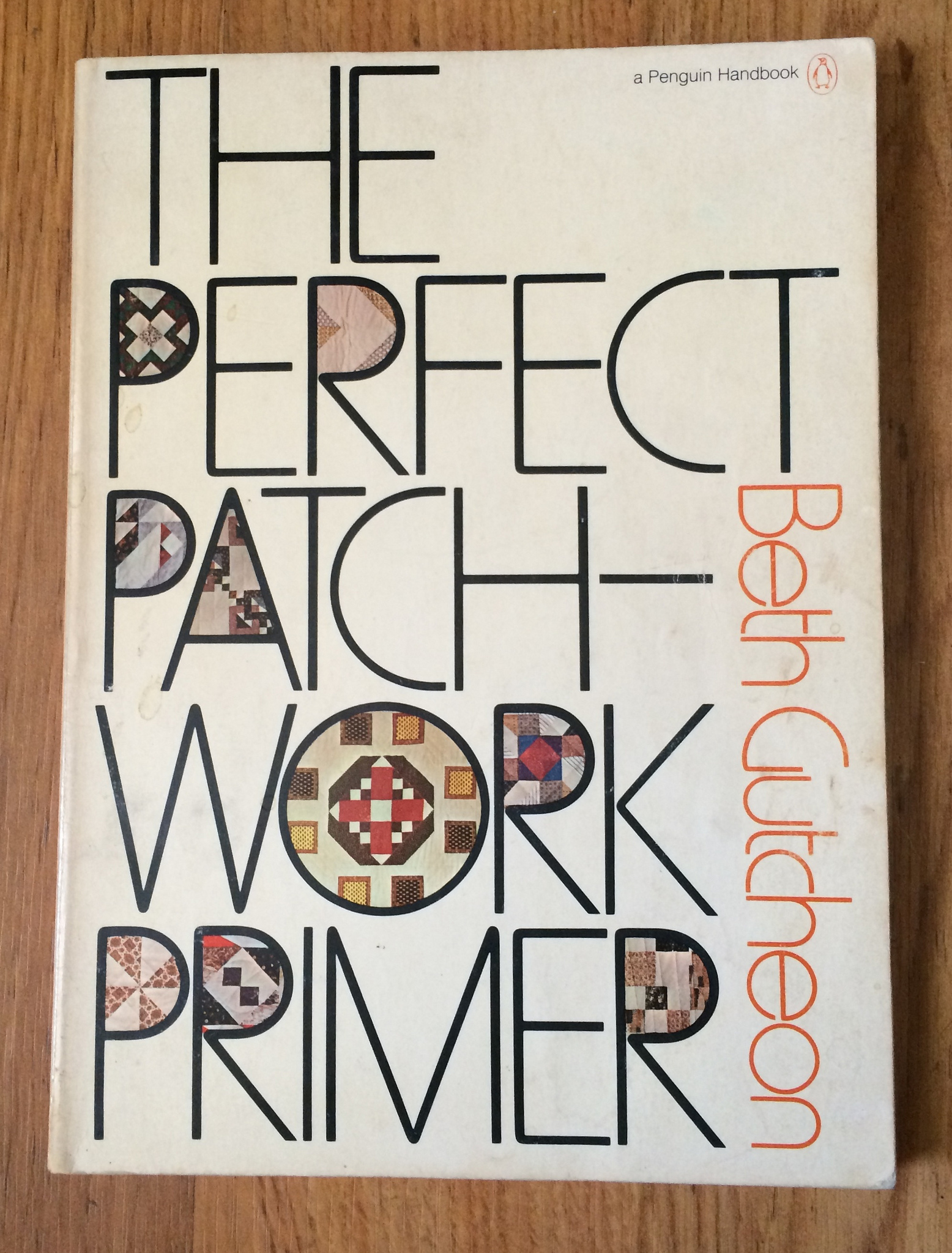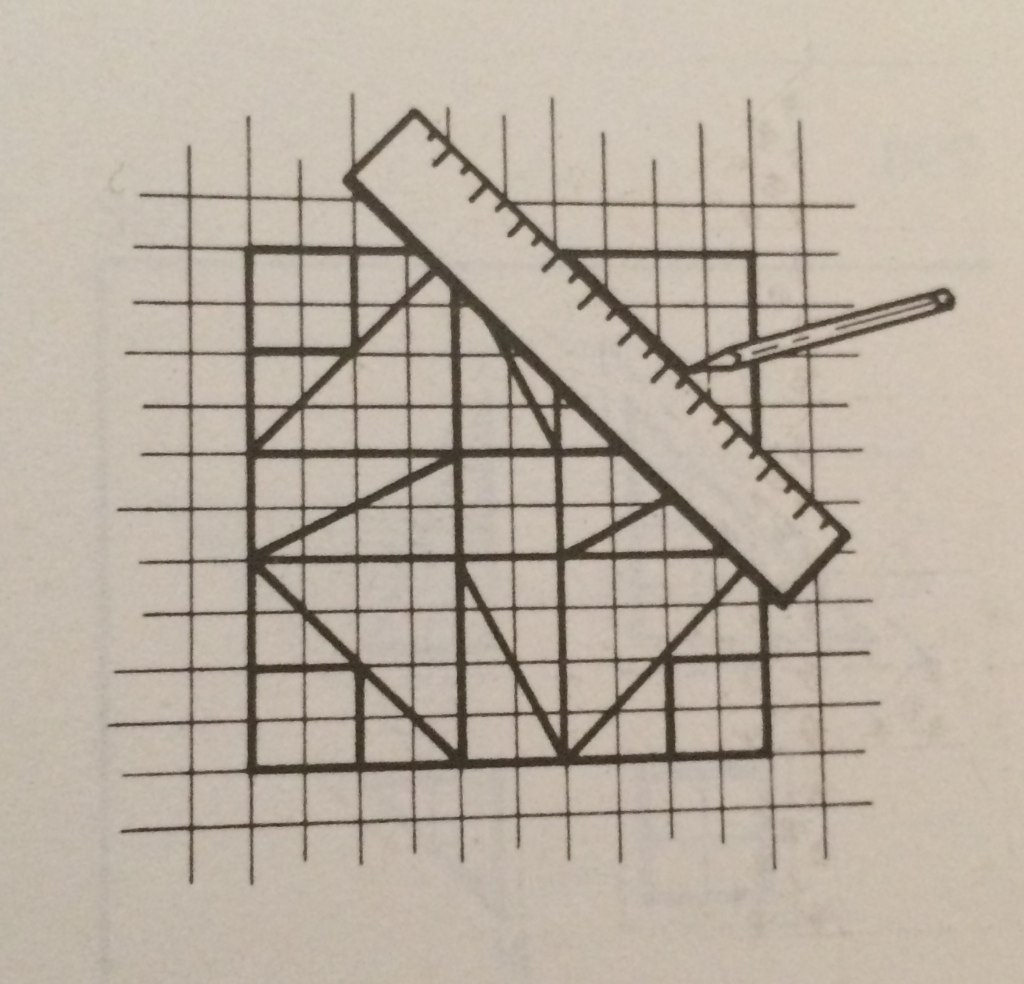The Olfa Rotary Cutter has turned 35 years old. The use of rotary cutters and self healing mats has radically changed the way we cut fabric for quilting today.
For those of you too young to remember how we used to do things, I thought it might be fun to take you on a walk down memory lane, and tell you how we used to cut fabric.
I started to quilt forty years ago in 1974 at the tender age of 20. In those days cutting pieces for patchwork was a tedious process. The only book I had available to me at the time was The Perfect Patchwork Primer, which does not appear to have been updated recently, but you can still find some older copies on Amazon.
I read that book from cover to cover. This is where I learned how to make templates for cutting the pieces of fabric I needed for my patchwork blocks. There is a detailed section about “Making Templates” beginning on page 124 of the softcover edition of The Perfect Patchwork Primer published in 1973.
This book recommends using graph paper, but also goes into detail about how to use drawing instruments to draw a quilt block to scale. I used graph paper for my fist few sets of templates, but lucky for me I eventually completed a required course in mechanical drawing as part of my Art Education degree at Kutztown University. As a result I became adept in the use of a drawing board, T-square, drafting triangles and even the use of an architect’s scale when it was needed. I could get by without the use of graph paper if necessary, and there was some pleasure in knowing that I could do things the hard way. All I needed was a plain piece of drawing paper, and my drafting tools, and I was good to go.
The recommended technique for creating templates, especially in complicated blocks, was to first draw out one’s entire block to scale. (Diagram from page127)
You then cut the pieces apart very carefully. You adhered each unique shape to poster board leaving plenty of space between the pieces to allow for adding the desired seam allowance, which you then drew into place. (Diagram from page 128)
Then you cut out your templates. If you were using poster board you could do that with scissors, but if you had the skill to use a mat cutter that was even better. Templates were traced with pencil directly on your fabric. You kept your pencil sharp for accuracy. It was important to realize that simply tracing a poster board template would eventually degrade it’s accuracy. Therefore, you diligently made fresh templates for each project even though the shapes may have been exactly the same as shapes you had used in previous projects. You also may have made a fresh template in the middle of a project if you had to make a great number from a specific shape.
My First Act In Fiber Arts lasted about five years. The end of my First Act quilting days would have been the time when the Olfa Rotary Cutter first appeared. I didn’t notice it then. I did notice it a few years ago when I considered getting back into quilting and embarking on My Second Act In Fiber Arts. I have to admit that I was intimidated by the cutters and the mats, and that my intimidation contributed to a delay in getting back into fibers. I bought them, however, and eventually gave them a try. There’s no turning back to hand drawn templates at this point.
Do you want to really appreciate how good we have it now? Find The Perfect Patchwork Primer in the library, or borrow it from your local guild dinosaur. I’m proud to be a quilting dinosaur myself, who appreciates NOW but remembers very vividly what things were like THEN.





Pingback: Weekly Progress Report: Selecting Kona Solids | Hexy Lady